Styles of play
Sensory play
From birth, your child uses their senses to explore and make sense of the world. Sensory play stimulates these senses and supports brain and language development. Sensory play is also great for calming anxiety or frustration
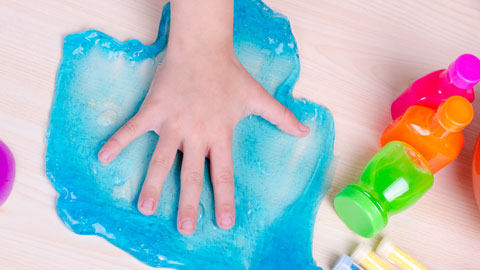
Let’s get gooey with it
Making goop is great for encouraging imaginative play and building fine motor skills. Your child can strengthen their hand muscles by pulling and stretching the goop. Add a layer of challenge by hiding mini animals to make a 'gooey swamp'. Your child can practise finding and pulling them out. You can add spoons, tongs or scoops for an extra workout for your child! One of these simplest and safest recipes uses just corn flour and water.
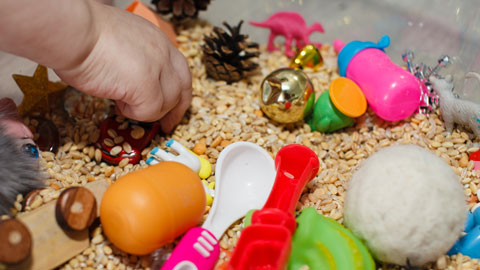
Sensory mystery box
Let your child explore a range of objects using only their hands. They will use touch to try to form a mental picture of the object until they can identify it. In addition to naming the objects, ask your child how they feel? Is the object rough or smooth, warm or cold, fluffy, slippery, smooth or prickly?
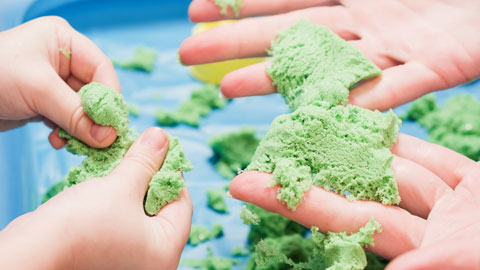
Moon sand
Your child will love sinking their hands into this cool, soft, crumbly sand that can be shaped and pressed into moulds and squished between little fingers! This is a great way to encourage open-ended play that relaxes your child too.
What you'll need:
- 1 cup brown sugar
- 1 cup corn flour
- 5 tbsp vegetable oil
- Food colouring
Store your moon sand in an airtight container
Physical play
Active play is critical for your child’s physical development. It helps support their coordination, balance, gross motor and fine motor skills. Children use up their natural stores of energy which promotes better eating and sleeping habits
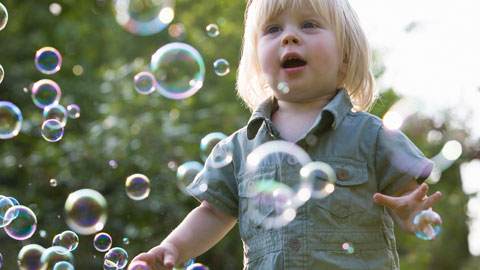
Chase bubbles
Did you know the simple exercise of blowing bubbles supports your child’s hand-eye and foot-eye coordination? Chasing bubbles also promotes balance and muscle tone development as well body and spatial awareness.
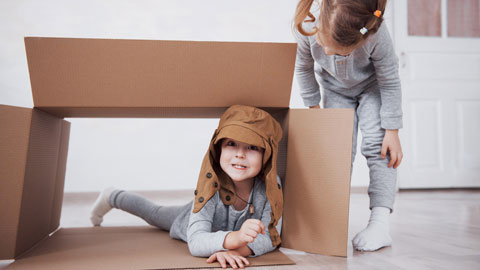
Obstacle course
Cardboard boxes make great tunnels for your child to crawl through. Lay down a few hula hoops and a bucket and balls and you have the perfect jumping, crawling, throwing obstacle course to support your child gaining physical strength and building confidence!
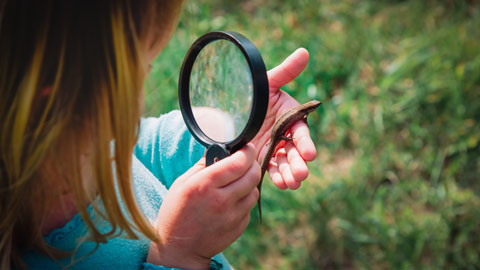
Nature walk
Being outside and surrounded by nature, children experience an ever-changing and free-flowing environment that stimulates all the senses. Take a magnifying glass to explore nature up close. Look out for bugs, butterflies and frogs as they are pretty neat up close and are a great way to talk to your child about what they eat, where they live and what kind of weather they like.
Construction play
Children love to stack, sort, assemble and disassemble. Through construction play your child learns to focus, problem solve and think ‘outside of the box’ by using their imagination. Your child also learns important social skills supporting cooperation, negotiation and team work
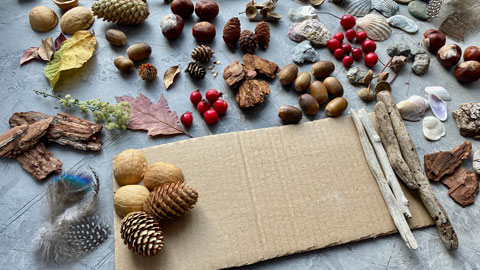
Loose parts
One of the simplest ways to engage your child in open-ended play is to gather loose, tactile materials that allow your child to build, experiment, enquire and invent! Loose parts give your child the freedom to arrange and re-arrange as they create their own rules, which allows the focus of the experience to be on the process not the product.
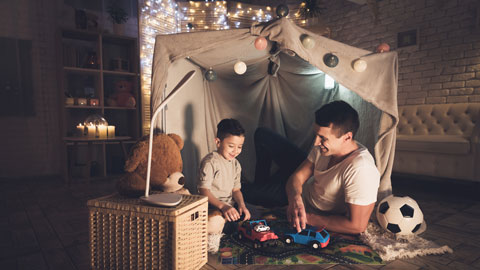
Build a blanket fort
For countless hours of construction fun, you can make a fort with everyday items in your home like old curtains, sheets and chairs. For added coziness, pop in a few pillows, some fairy lights and your favourite book to share!
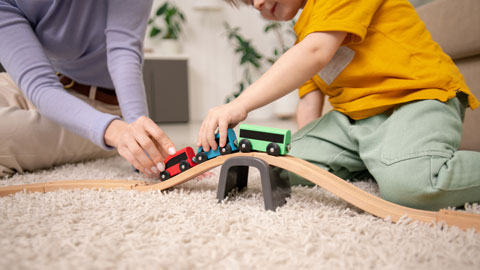
Get down and play
If you're struggling to engage your child in constructive play, you can spark more interest by getting down on their level and modelling play for them. You can support their language development by talking to your child about what you are doing and wondering together about different possibilities.
Pretend play
Children use role play to help them make sense of the world. The process of pretending builds skills in many essential developmental areas including social, emotional, language and communication, imagination and creativity
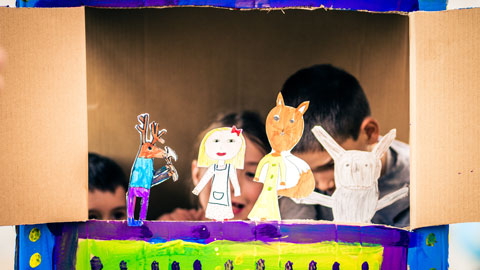
Puppet show
Puppet play is a wonderful way to engage with your child and enter their imaginary world. Here, they are experiencing and expressing feelings of other characters through role play. While building empathy and language skills your child is also using their imagination to create their own storylines which supports brain development, memory and literacy.
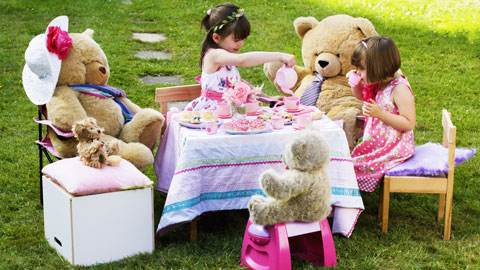
Teddy bears picnic
This is one of the easier imaginative play experiences to set up. Just grab a blanket, your favourite toy friends and some bowls and plates. Your child will practise making conversation, taking turns and using their manners. For a more sensory experience, add water for pouring practise.
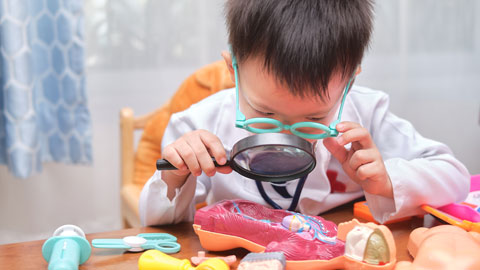
Role play
Research shows that children are innately sociable and helpful and have a strong concern over the welfare of others. Role playing doctors and patients can be a helpful way for ill children to play through some of their medical experiences and make sense of them in a familiar context at home. As a patient, this is also a great opportunity to have a little rest as your child performs a pretend checkup!
Creative play
Creative play gives your child the opportunity to let their imagination run wild and create worlds of their own that they have control over. An active imagination will continue to serve your child throughout their life as they develop their language and communication skills, at their own pace.
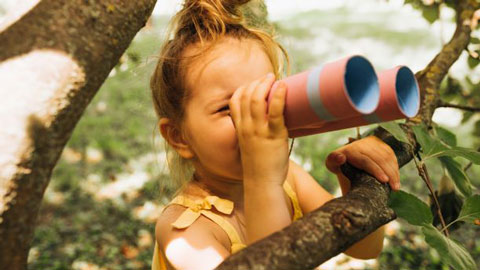
DIY binoculars
A must have for any nature enthusiast are binoculars! You and your child can make your own by taping two cardboard rolls together. Tape a strap on either side. Even through a pretend lens, the world looks sharper and your child will learn to focus on the details. Pop some cellophane over the end to explore the world in a different colour!
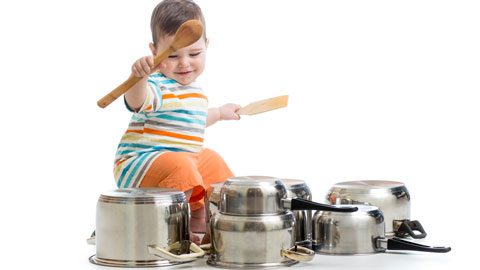
Playing with sound
Banging, clashing, shaking, clapping – from very early on your child is experimenting with sound and almost seems drawn to a saucepan and wooden spoon! Making different sounds helps develop your child’s thinking process – this is a soft sound, this is a loud sound – and when they see you smile they make the connection between tone and emotion which supports their social and emotional development and definitely their brain development!
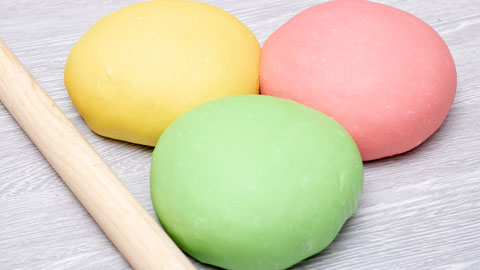
Playdough power
This simple to make creative staple allows your child to use their imagination and strengthen the small muscles in their fingers as they squish, roll and press their way to fun. With a few kitchen items such as a rolling pin, plastic bowls, cups and plastic knives and forks for cutting and making shapes, your child will experiment and explore for hours! You may consider using cookie cutters and medium sized craft objects like paddle pop sticks to extend on your child’s creative thinking.